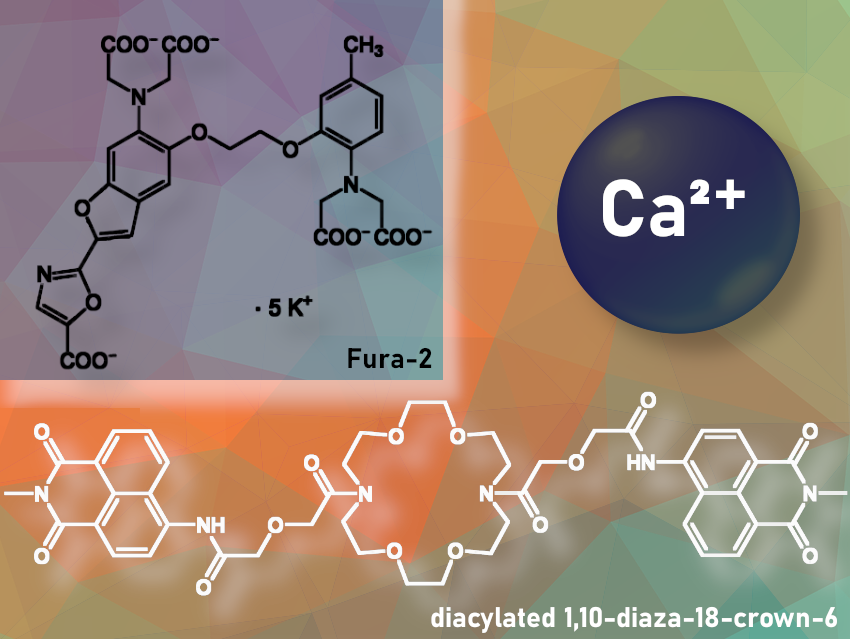Calcium plays an important role in many cellular functions. Fura-2, an amino polycarboxylic acid, is a fluorescent dye that binds to free intracellular calcium. It was the first widely used dye for calcium imaging and is still very popular. Simon Wheeler and colleagues from the Leicester School of Pharmacy, De Montfort University, UK, have developed a new fluorescent sensor for Ca²⁺.
Why are you interested in developing a new Ca²⁺ sensor?
We developed a fluorescent sensor for Ca²⁺ using diacylated 1,10-diaza-18-crown-6, an ion-binding element that hasn’t been used before. There are lots of excellent fluorescent calcium sensors out there but most of them rely on ionized carboxylates to coordinate the metal. This means that they’re really hard to use in acidic environments such as lysosomes, the digestive organelle of cells which rely on calcium for proper function.
What is new and cool about your sensor?
Probably the coolest thing is that this was the first fluorescent calcium sensor we made, and it works.
It’s also completely selective over monovalent cations – you don’t get any response even with 10,000 equivalents of Na+ or K+.
What is the longer-term vision for your research?
The long-term vision is still to be able to deliver a fluorescent calcium sensor to lysosomes in live cells. This sensor won’t enable us to do that (see next question) but we’ve learned a lot along the way that makes us think that the goal is achievable.
What part of your work was the most challenging?
The moment when my student Oscar showed me the data on the pH sensitivity of our sensor. Even though the molecule has no basic centers, its fluorescence changes at low pH values. This means that we haven’t got away from acid sensitivity. For a while, I thought that this had killed the entire project.
Poor Oscar. What has made you optimistic about continuing?
Exploration. Crown ethers have been around for almost 60 years and have been extensively studied, and yet they still surprise us.
I don’t just want to use sensors to solve problems but I want to understand them as well, and there is still so much to discover. For example, our sensor is much more water tolerant than others that are based on crown ethers, but I don’t think that we fully understand the reasons behind that.
Thank you very much for sharing these insights.
The paper they talked about:
- Diacylated 1,10-diaza-18-crown-6 as an Alternative Template for Fluorescent Sensors of Calcium Ions,
Oscar G. Smith, Jennifer C. Anene, Simon Wheeler,
Analytical Science Advances 2024.
https://doi.org/10.1002/ansa.202400034

Simon Wheeler is a Lecturer at the Leicester School of Pharmacy at De Montfort University, Leicester, UK.





